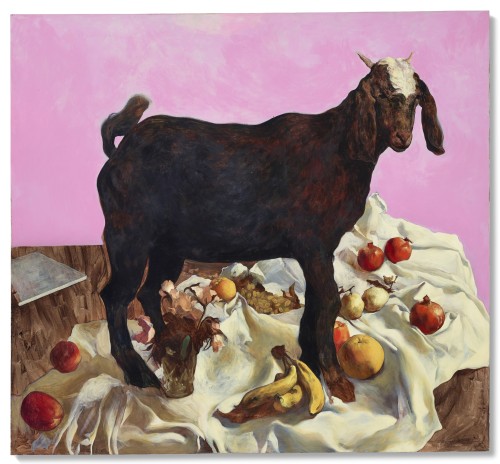Tina

Tina
More Posts from Caspers-ghost-4ever and Others



Peter Allen Nisbet, ‘Surf at Salvo’ (Oil on canvas), 1995

kingprincess69: back in glam for u

Vanessa Cooper
had a walk now I shouldnt be insane anymore

Salman Toor (Pakistani, b. 1983), Barbie Bakri, 2011. Oil on canvas, 46 x 50 in.

I would like to science please


“The ‘now what’ question is a continual challenge, not a static endpoint. It means to open up creativity, exploration, ongoing efforts from multiple places. To do all that, we have to keep reading, keep listening, keep reflecting, keep learning.”
Teo You Yenn, This is What Inequality Looks Like

A gurl and her dawg


Digitalis (foxglove)
From: Lawrence, S., (2020), Witch’s Garden, Royal Botanic Gardens Kew, p.133:
“Goblins’ thimbles, fairy weed, snoxums, snompers, fairy’s petticote - the local nicknames for Digitalis have to be some of the most evocative of all plants.
“It’s a clever plant; the female flowers at the bottom of the stems contain the most nectar, persuading the bees to visit there first and then work their way up the flower spike to the male flowers, pollinating as they go…
“…It was unlucky to bring foxgloves, especially white ones, into the house, as it encouraged witches. they could be useful, however, in a somewhat risky method of identifying a changeling. The child was given three drops of foxglove juice, put on a shovel and swung out of the front door three times, the parents crying, “If you are a fairy, away with you!” If the child was a changeling, it would die. If it was a human, it would be traumatised for the rest of its life. The child would be ill, at the very least. Digitalis contains toxins, including cardiac glycosides, which increase heart rate. Nausea, headaches, diarrhoea and visual, heart and kidney problems are just some of the symptoms caused by ingesting the plant. Nevertheless, the leaves were useful to bind around fresh wounds. Placed in a child’s shoes, they were said to guard against scarlet fever.
“While those cardiac glycosides could be fatal, others have been developed into pharmaceutical drugs. it’s possible the Egyptians knew about foxglove’s ability to stimulate the heart - but in 1775, Dr. William Withering, searching for treatments for dropsy (oedema), began systematic trials using Digitalis. The resulting An Account of the Foxglove and some of its Medical Uses (1785) proved a game changer in the treatment of certain heart conditions. His memorial, in St. Bartholomew’s churchyard in Edgbaston, is carved with foxgloves.”
(These plants are extremely dangerous. Do not attempt to use them in any kind of home remedy, and use gloves if you do have to handle them)
-
 calenduladreams liked this · 4 years ago
calenduladreams liked this · 4 years ago -
 caspers-ghost-4ever reblogged this · 4 years ago
caspers-ghost-4ever reblogged this · 4 years ago
